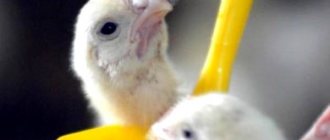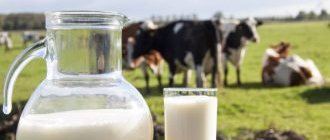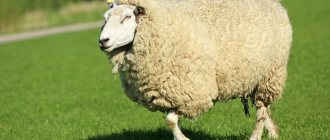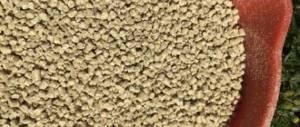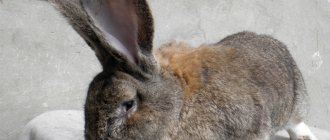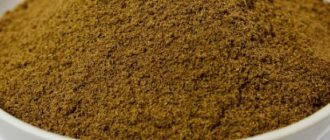In addition to food and water, animals also need a favorable microclimate for rapid growth and good health. That is why any farm - from a small household to a huge agricultural complex - must have ventilation with sufficient performance.
Particular attention should be paid to this issue when building large pig farms that will house hundreds of animals. Below we will look at the diagrams and rules for arranging ventilation systems for both “private” small pigsties and large complexes.
Why is it important to install a ventilation system on the farm?
The ventilation system performs the following functions:
- provides animals with oxygen;
- maintains an optimal level of humidity (dampness may occur in a locked, warm room in winter);
- maintains an optimal temperature level (in summer it will be hot in a locked room, but in a ventilated room there will be a more comfortable temperature);
- eliminates unpleasant odor;
- removes ammonia and carbon dioxide (which are released from pig manure and are harmful to the body in high concentrations).
If a favorable microclimate is maintained indoors, the pig farm receives the following benefits:
- normal fertility of the herd is maintained;
- young animals are more likely to survive and develop normally in the first months of life;
- pigs gain weight normally;
- the behavior of the animals is maintained normally: they do not become restless or, on the contrary, too lethargic;
- the estimated number of livestock can be placed in the room (while in a room with poor ventilation it is unlikely to be able to accommodate as many pigs as the space allows without problems);
- the risk of disease is reduced.
And vice versa: in unfavorable conditions it will be much more difficult to keep animals. Excessive humidity leads to diseases
What should the microclimate be like: about the temperature and humidity inside the pigsty
One of the main tasks of the ventilation system is to provide a favorable microclimate. If normal temperature and humidity for animals is maintained inside, they will develop better and get sick less.
In the pigsty, the microclimate should be within the following limits:
| Purpose of the premises | Temperature, degrees | Humidity, % |
| for keeping pigs, sows, boars | +15..+19 | 40-75 |
| for weaned piglets | +18..+22 | 40-70 |
| for replacement young stock | +18..+22 | 40-70 |
| for maintenance they ask for 1 fattening period (up to 160 days after birth) | +17..+21 | 40-75 |
| - in the 2nd fattening period (over 160 days after birth) | +16..+20 | 40-75 |
| for keeping sows 7-10 days before birth | +18..+22 | 40-70 |
| for sanitation of pigs | +20 | 80 |
Making separate rooms for keeping “different” animals is only relevant for large pig farms. In other cases, minor deviations from the indicators are permissible, but only upward (that is, a little warmer is possible, colder is undesirable).
An important nuance: at low temperatures (below the recommended) during the fattening period, weight gain will drop. Moreover, every degree will play a role.
Consequences of thoughtless saving
Keeping pigs requires compliance with a number of technical and environmental requirements, which cannot be met without ventilation. Often, driven by the desire to save money, farm owners decide to design their own ventilation and implement an air circulation system with their own hands. The lack of an optimal level of gas exchange intensity in a pigsty can lead to the following negative consequences:
- Deterioration of livestock health and its resistance to diseases.
- Serious quantitative restrictions on the placement of pigs in the premises.
- Reduced growth and weight gain of animals.
- Deterioration of sows' fertility to a minimum level.
A properly selected exhaust system causes the exact opposite effect - the livestock grows stronger, accelerated weight gain is observed, and the fertility of sows increases significantly.
In addition, the biological situation in the pigsty is significantly improved, the level of concentration of moisture and microorganisms is normalized. Positive changes are especially noticeable when equipping a complex ventilation system with additional filtering and temperature control units.
We recommend that you read: Calculation of a natural ventilation system for a home
What affects the calculation of the circuit?
The calculation of the scheme is influenced by:
- Room volume. The larger it is, the more productive the ventilation system should be. In rooms with large volumes, natural ventilation systems can no longer cope, and only supply air systems need to be used.
- Number of pigs. The more heads there are, the more oxygen they will need.
- Climatic features of the region. First of all, you need to take into account the average temperatures at different times of the year and the amount and frequency of precipitation (which can affect humidity). In cold regions, in addition to a ventilation system, it is imperative to install powerful heating systems. In regions with high humidity, it is necessary to either build a powerful ventilation system and/or install dehumidifiers in addition to it.
- Location of the pigsty. If the premises are located in an open area not in a lowland, you can use a natural system (if the livestock is small). In other cases (the room is protected from the wind by other buildings or trees, or is located in a lowland) - only a forced system should be used.
- Direction of the wind. The building should face the leeward side.
How to calculate?
The main criterion is the frequency of air exchange . It should be:
- in winter: up to 4-5 times per hour;
- in summer: 10-15 times per hour.
That is, in winter, the air in the room should be renewed 4-5 times in 1 hour.
To calculate the performance of a ventilation system you need:
- Calculate the volume of the room: multiply the area by the height of the ceiling.
- Multiply the volume by the maximum required multiplicity - in our case by 15.
- Ideally, make a small performance reserve.
Let's give an example of calculation: we have a pigsty with an area of 100 m² and a ceiling height of 2.3 m. We determine its volume: 100 x 3 = 300 m³.
Now we multiply 300 by 15 = 4500. This is how many “cubes” of air our ventilation should provide in 1 hour at maximum load.
Why is there ventilation in a pigsty?
A comfortable microclimate in a pigsty is based on 3 main factors - temperature, humidity, and the presence of fresh oxygen. The ventilation system is aimed at ensuring a normal level of these indicators in the room. In simple terms, constant air circulation performs the following functions:
This leads to the following favorable factors:
In the cold season, you need to especially carefully monitor the air flow speed, since if the standards are too high, the livestock may die. The maximum rate is 22-25 meters per second. Measurements are taken at a height of half a meter from the floor of the pigsty.
Ventilation schemes for excitation of air exchange
Based on the principle of exciting air exchange, the circuits are divided into the following options:
- Natural ventilation - no fans are used at all.
- Forced - fans are used for both exhaust and supply.
- Naturally forced - fans are used either for exhaust (most often) or for supply (very rarely).
The natural scheme is good for its simplicity and low cost. Its device will not require the installation of an air duct system, installation and connection of electrical equipment (and payment for electricity for it). But it also has significant disadvantages:
- performance depends on the weather: wind (direction and strength), pressure, temperature;
- performance can be adjusted very roughly;
- productivity is low (compared to forced ventilation systems);
- in summer, system performance can drop to almost zero;
- In winter, due to inaccurate adjustment, heating costs may increase due to too much frosty air inflow.
Let us conclude: this scheme is relevant mainly in a barn, or for a small farm, and/or if the pig farm is located in a warm region.
In all other cases, or if it is necessary to ensure stable air exchange with high productivity, the only reasonable option is a forced or naturally forced system.
Industrial exhaust system options
Ventilation for large pig farms must be purchased from reliable suppliers. Large industrial pigsties, in which the livestock count reaches hundreds and thousands of animals, require constant movement of clean air masses. Currently, various climate control systems are actively used, which are characterized by great efficiency, which is why their price, although justified, is high.
We recommend that you read: Ventilation in a frame house
The difference between “home” and industrial options mainly lies in the cross-sectional dimensions of the air ducts, the presence of powerful fans and autonomous control systems. Otherwise, the principle of operation of each exhaust system remains the same: with the help of fans, air is intensively drawn in or pushed out through ventilation ducts located in a certain way.
Ventilation diagram for a small pigsty: do it yourself (+ video review of a ready-made solution)
The simplest option is suitable if you need to set up a ventilation system with your own hands in a small pigsty for several animals. This is relevant for farmers who keep pigs on their own plot.
In this case, the inflow is organized through doors and/or windows. The only caveat: if your region has cold and long winters, then this option may not be suitable - the room will be very cold. In this case, it is correct to make the inflow through an insulated pipe with a damper, which will need to be covered in cold weather. The windows in such a room can be sealed for the winter and made small.
Air removal can be organized in two ways:
- Through the exhaust pipe in a natural way. In this case, the pipe is mounted in the wall, which is opposite to the inflow point. It should exit from the top of the room (under the ceiling), through a wall or through the roof, and exit above the roof level.
- Through an exhaust pipe with a fan (forced system). This scheme is much better: a working fan will provide stable draft. The air will be removed better.
In principle, in any case, the second option (with a fan) is more convenient. In terms of implementation, it is not much more complicated and expensive, but in terms of efficiency, it is many times better.
Air ducts (both supply and exhaust) are easiest to make from ordinary plastic pipes with a diameter of up to approximately 150 mm.
The fan performance must be selected according to the volume of the room, multiplied by 15. This is the maximum value, with a huge margin. As an option, for a small pigsty you can get by with a weaker model: to calculate, you can multiply the volume by 10-12.
Ventilation options
The ventilation system can be artificial or natural. Each of them has its own characteristics, advantages and disadvantages.
Natural
Natural air circulation implies the presence of holes in the wall or ceiling. Accordingly, in the form of windows and vents. It is customary to create these elements at the stage of construction of a pigsty, so they are included in the diagram during planning.
If the farmer is thinking about the penetration of fresh air flow after the construction of the building, then he will have to make holes in the selected location. In this case, it is necessary to take into account the material from which the room is built, the location of the formwork, rafters, etc. But in this case, the most advantageous option would be to install a window directly in a wooden door. To do this, just make a hole, install a mini-door and a latch.
In many cases, such actions are not enough, since the room must have 2 outlets - one for air intake, the other for removing ammonia gases. If there are many individuals in the pigsty, then there should be more than 2 holes.
In addition to ordinary vents, you can install structures made of metal or plastic pipes that are mounted in the ceiling part. The air penetrates naturally due to the force of the wind. Therefore, the system has a significant disadvantage - in calm weather there is no air circulation.
You can see how natural ventilation with a condensate drain works in the following video:
Artificial
An artificial product is the creation of human hands. In this case, fresh oxygen enters the pigsty through special devices that operate from the mains. In a word, air circulation is forced.
Based on this, we can conclude that no weather conditions, wind or climate affect the functionality of ventilation. In addition, modern devices are produced with additional devices - for heating the room, controlling humidity levels, air purification, etc.
An artificial ventilation structure involves energy consumption during its use. While natural air circulation costs consumers completely free. But the level of air exchange in the second case is much lower.
System diagrams for a large pig farm
Providing air exchange for a large pig farm is a more difficult task. Almost always such buildings are made in the shape of a rectangle - this is exactly the option we will consider.
The system can be implemented in several ways:
- Roof (or shaft) scheme.
- Longitudinal.
- Tunnel.
- Transverse.
These options are not the only ones, but they are the most common for large pig farms.
Each scheme can be implemented either as a natural system (without fans) or as a forced system (with fans). Usually fans are placed on the exhaust, but for large farms the inflow can also be forced.
It is impossible to say which scheme is better: the differences are essentially only in the location of the inflow and exhaust points.
Below we will consider each option in more detail.
Roof (shaft)
In this case, the inflow points are located along two opposite walls, along their entire length. Exhaust ventilation - mounted in the center of the roof.
2 options for implementing a roof scheme
It turns out 3 parallel lines: there is an inflow along two walls from below, and an exhaust in the center. Air passes from both sides of the walls and is removed in the center of the room.
There is another option for this scheme: the inflow point is located in one wall, and the hood is discharged through the roof near the opposite wall.
Longitudinal
In this case, the inflow points are located along the entire length of both long walls. Air removal is carried out at one of the ends of the building.
The opposite end remains “deaf”: there is no inflow or exhaust in it.
Tunnel
This scheme is similar to the longitudinal one: air is removed through one of the end walls.
The difference is in the inflow: it is not made along the entire length of the long walls, but only in a small part of them, which is located closer to the second end. It turns out that the air moves from two corners from one end of the pigsty to the wall opposite them - like through a tunnel.
Transverse
The arrangement is organized as follows: the points of air inflow and removal are located along two opposite long walls.
Along the entire length of one wall, air supply devices (vents, valves or fans) are installed. Exhaust fans are installed along the entire length of the opposite wall (or exhaust pipes are removed).
Modern types of ventilation systems
Properly designed ventilation in a pigsty is an urgent need when creating optimal conditions for breeding livestock. Modern options that have proven effective in breeding pigs include the following types of venous systems:
- Roof simple hood.
- Roof diffuser system.
- Longitudinal or transverse ventilation.
- Supply system.
- Tunnel ventilation method.
We recommend that you read: Exhaust ventilation and its features
What equipment can be used for ventilation systems in large complexes?
We will provide only a general list - the exact equipment, its quantity and characteristics are always determined individually.
The list is like this:
- Ventilation shafts.
- Exhaust and supply fireplaces.
- Roof valves.
- Supply vents.
- Heaters - direct and indirect heating.
- Fans: roof, window, booster, shaft, tower.
Automation tools
For monitoring and control the following can be used:
- Temperature sensor.
- Humidity sensor.
- Automation for regulating fan speed.
- Servo drives for regulating or opening and closing ventilation shaft valves.
- Ventilation control station (for collecting readings and monitoring the system in one place).
In large pig farms, the system must work perfectly - even minor deviations in the microclimate in large volumes (with a large herd) can give a noticeable negative result.
Therefore, it is better to rely not on human attentiveness, but on automation.
How ventilation is done for dressing rooms: a list of all possible options
How to properly arrange barn ventilation: standards and methods

